

The Orient and the Far East are extremely popular holiday destinations these days. What if you could get home their décor style and live with it? Say hello to Chinoiserie, a lush and luxurious style created in late 18th Century Europe. This décor style, opulent and fanciful, is essentially the fusion of exotic Asian imports and extravagant baroque interiors. What can you expect? Asian-inspired motifs, rich colours, luxurious lacquers and unusual combinations. Chinoiserie is a perfect example of a design style that is truly global.
Chinoiserie is not a style created by the Chinese, but a European interpretation of East Asian design.
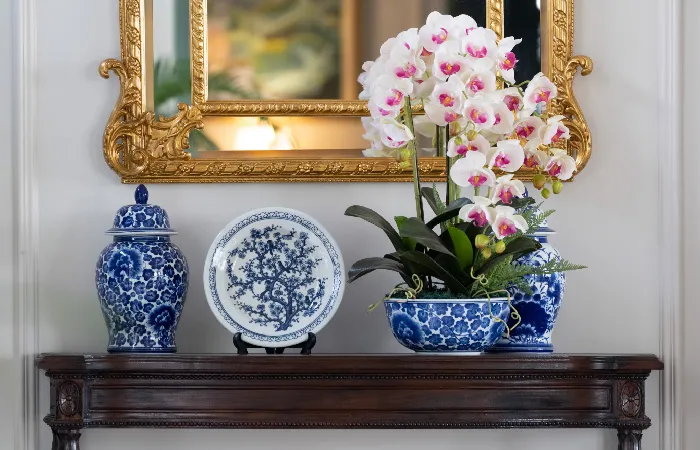
Chinese Porcelain
It is a far cry from Oriental or Chinese style, although the word chinoiserie inherently derives from the French word chinois, which means “Chinese”. However, this style didn’t actually come directly from any parts of Asia.
The European fascination with the Far East can arguably be traced back as far as the writings of Rusticello da Pisa, a thirteenth century Italian writer who had the dubious good fortune to share a Genoese prison cell with Marco Polo toward the end of his life. Rusticello recorded the stories Polo had brought back from years of traveling the world with his father and uncle and decades of service in the court of Kublai Khan. The resulting work, which was known as “The Travels of Marco Polo,” (among several other names) became incredibly popular. By the late 14th century, names of locations given in Polo’s recollections were included in the Catalan Atlas of Charles V . Some 117 years after Polo’s tales of China were first recorded they inspired Christopher Columbus to search for a Western route to Asia — a journey he would undertake with a copy of Polo’s book in hand.
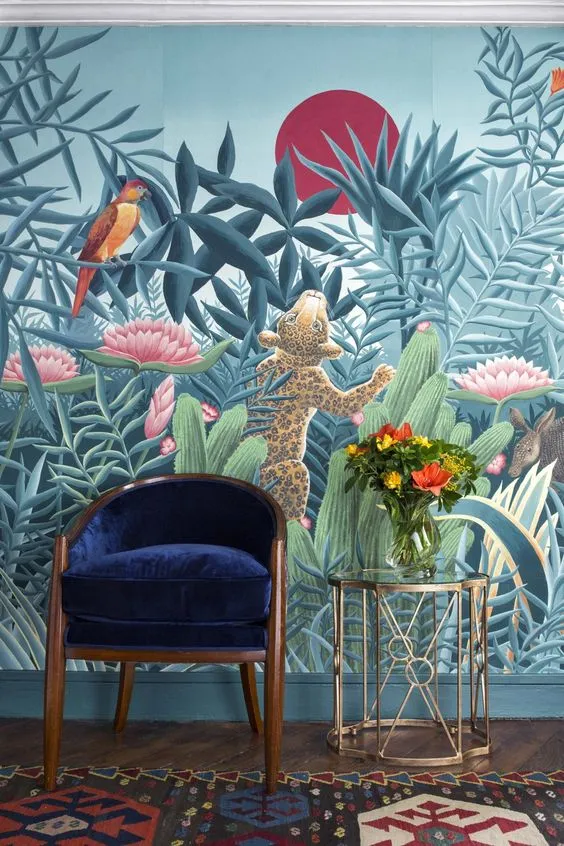
Chinoiserie wallpaper
What is Chinoiserie?
It’s actually a European interpretation of East Asian design influenced during the golden days of cross-continent trades in the 17th and 18th centuries. At that time, only a handful of Europeans travelled to Asia and developed a great respect for Asian art and culture.
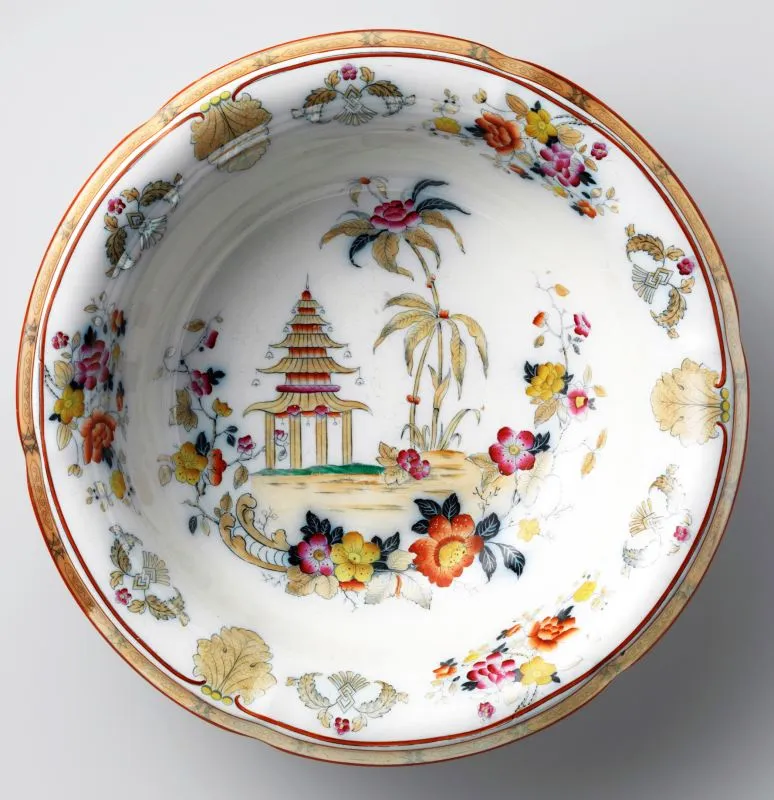
Washing bowl with floral motives and a pagoda, part of a washstand set, produced in 1882 by Petrus Regout and Co in Maastricht, Netherlands. Collection: ref. nr. BK-1983–229-B. Image by Rijksmuseum available under a Creative Commons License ➚. Has only one or two clues that the inspiration is Chinese in origin.
As trade with Asia flourished in the 17th and 18th centuries, the chinoiserie style soared in popularity. At that time, English and Italian designers and craftsmen sought to imitate the fanciful, decorative style of Chinese arts, silk, and lacquerware. European interpretations of these Chinese styles first appeared in interior design, furniture, pottery, and porcelain. Interpretations also surfaced in fine art, seen in the paintings of French artists like Antoine Watteau and Francois Boucher
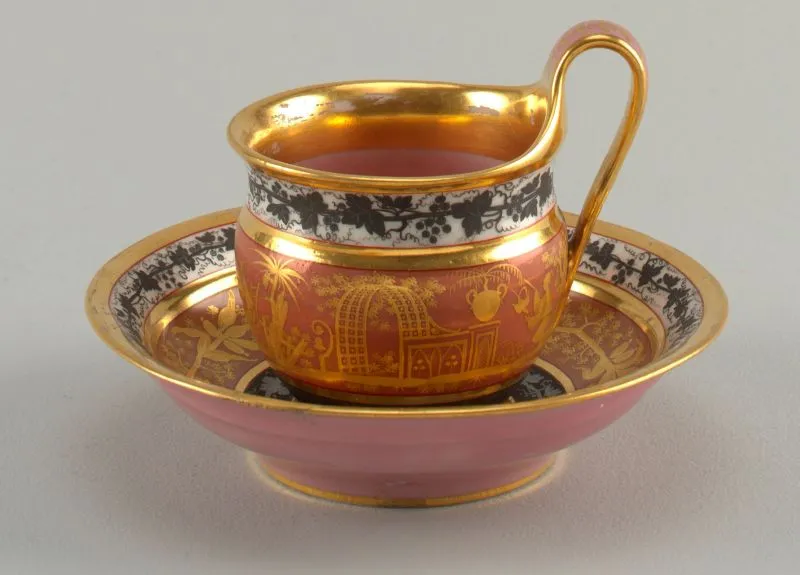
Curved cup with cavetto neck and high loop handle. Overglaze decoration on cup: at bottom, silver vine on black band; center: pink with gold chinoiserie; top: black vine on white. Inside pink, with wide gold band. Saucer with similar decoration, but wreath instead of chinoiserie. c. 1805. Image by Smithsonian Design Museum ➚ available under a Creative Commons License ➚Small cups and high saucers were the norm in early days of tea drinking
Despite very limited knowledge on the subject matter so unfamiliar to them, they were intrigued by exotic Asian cultures and began reinterpreting their versions of ‘East Asian designs’. These new designs were very much rooted in the highly ornamental rococo style that was highly favoured by members of the royal family. Very soon, chinoiserie became relevant as it graced the chambers and boudoirs in palaces of King Louis XV and King George IV.
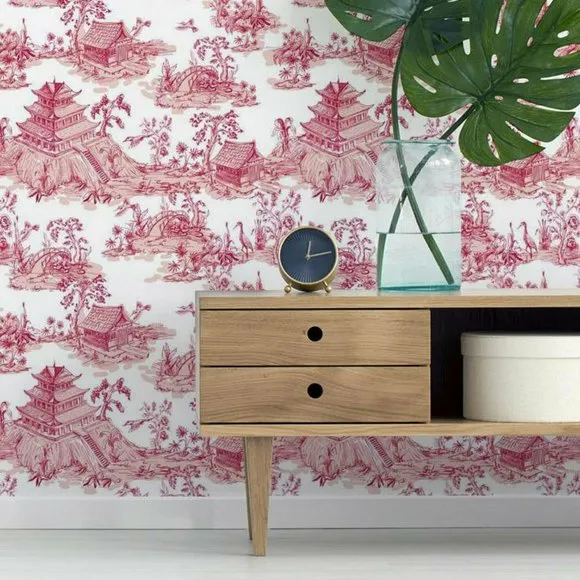
A surge of interest in decorative art quickly spread through Europe, and entire rooms with decor inspired by Eastern influences began appearing in court residencies and European homes as a result. Today, Chinoiserie is still a heavily emulated design trend because its whimsical, fantastical scenery and playful flourishes contribute to a charming decorative aesthetic.
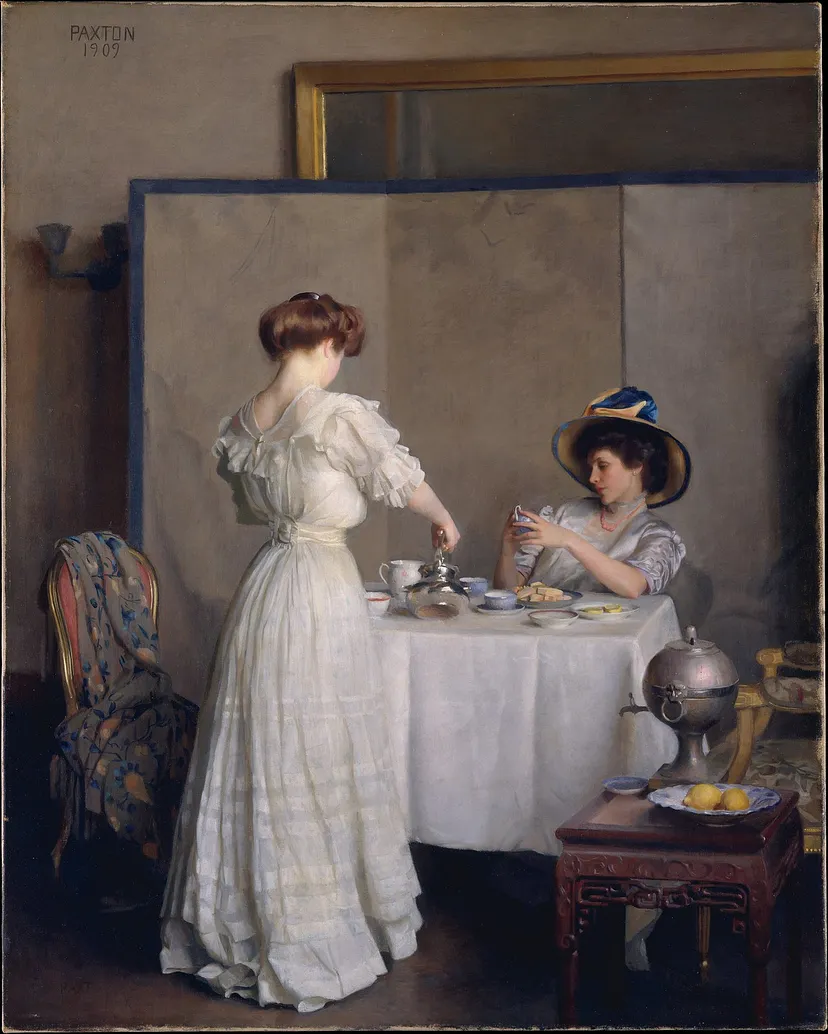
Tea Leaves by William McGregor Paxton, Boston, MA. metmuseum
It was also during this time that tea became one of Europe’s biggest imports. As tea appreciation grew in popularity, the need for elaborate mise-en-scène complete with tea sets, silverware, matching tables and chairs, tea chests and more, bolstered the demand for all things chinoiserie.
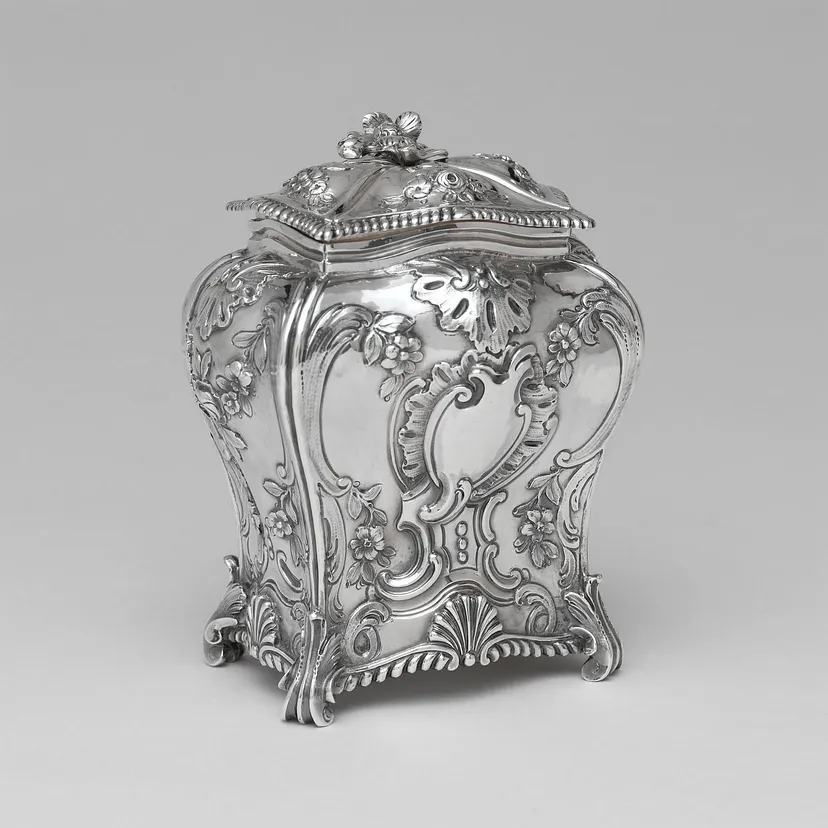
1762 Tea Caddy. British. Silver. met museum
Tea and sugar were expensive commodities during the eighteenth century and this chest could be locked to secure its valuable contents.
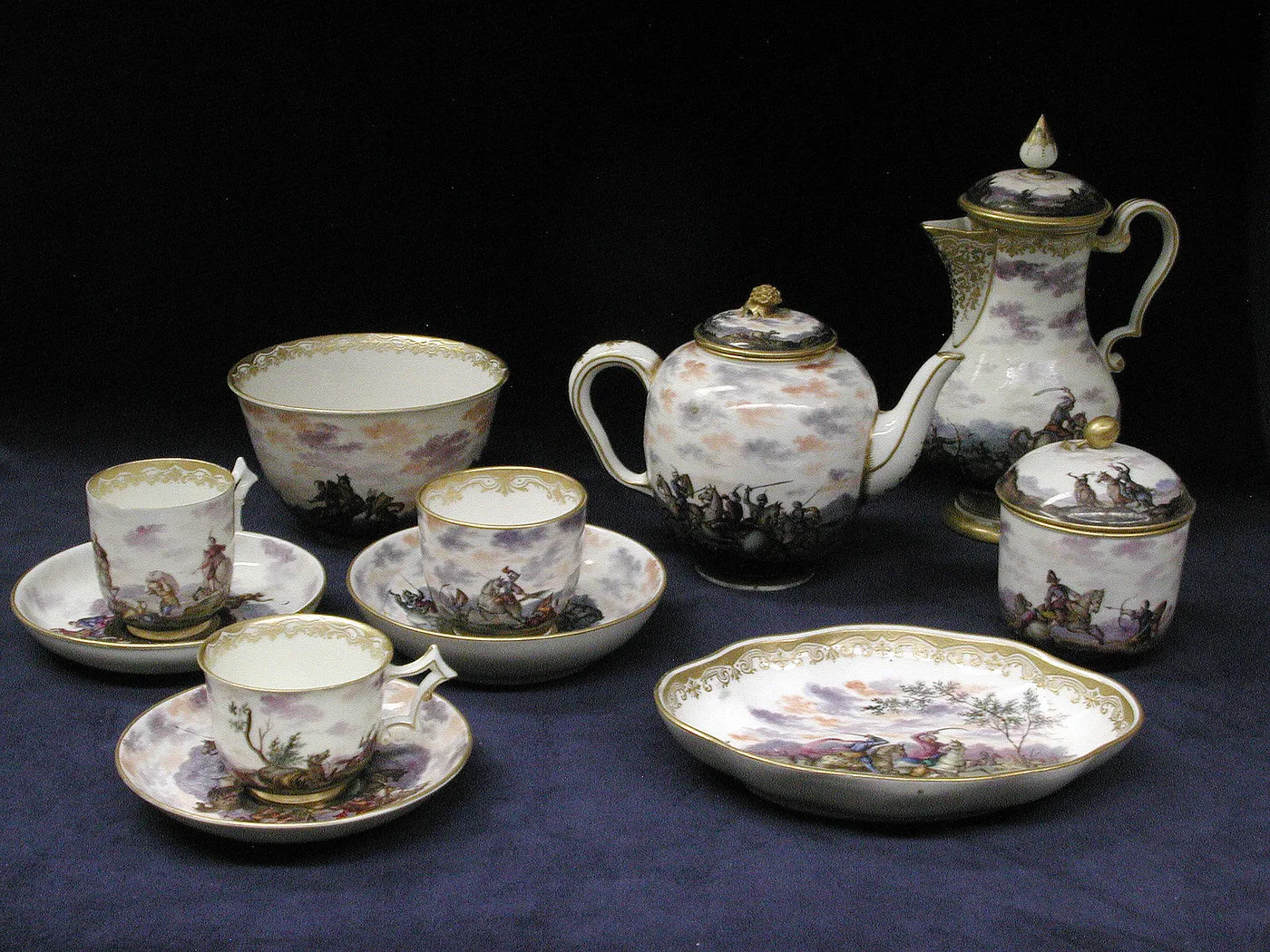
1743. Tea Service. Italian. Porcelain. metmuseum
Containing two canisters for tea (green and black) and a larger one for sugar, the pastoral scenes, and Italianate landscapes, combined with Rococo gilding against a pink ground, create an opulent effect.
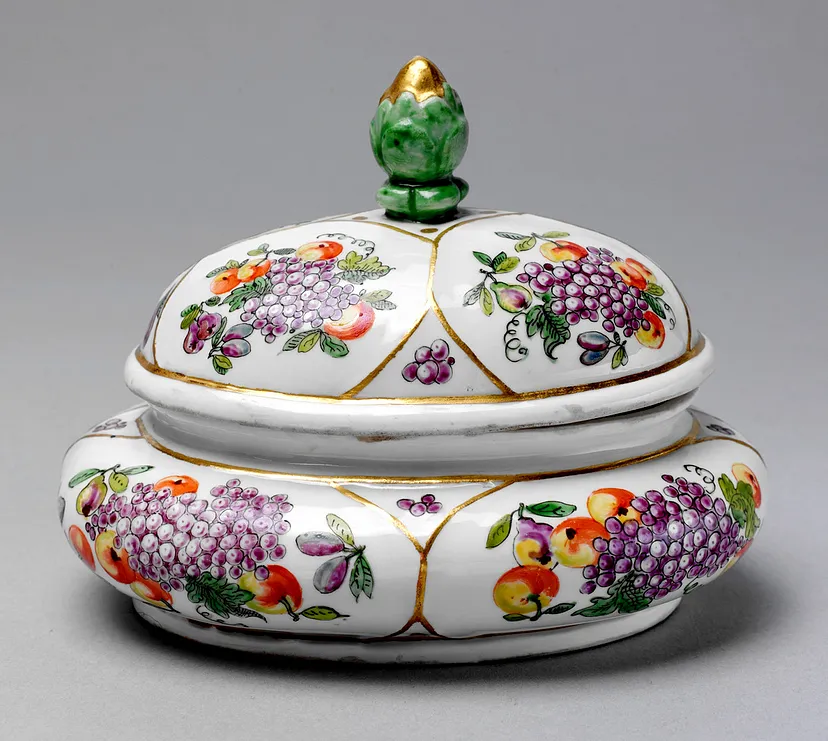
1730. Sugar Box. Austrian. Hard-paste porcelain. metmuseum
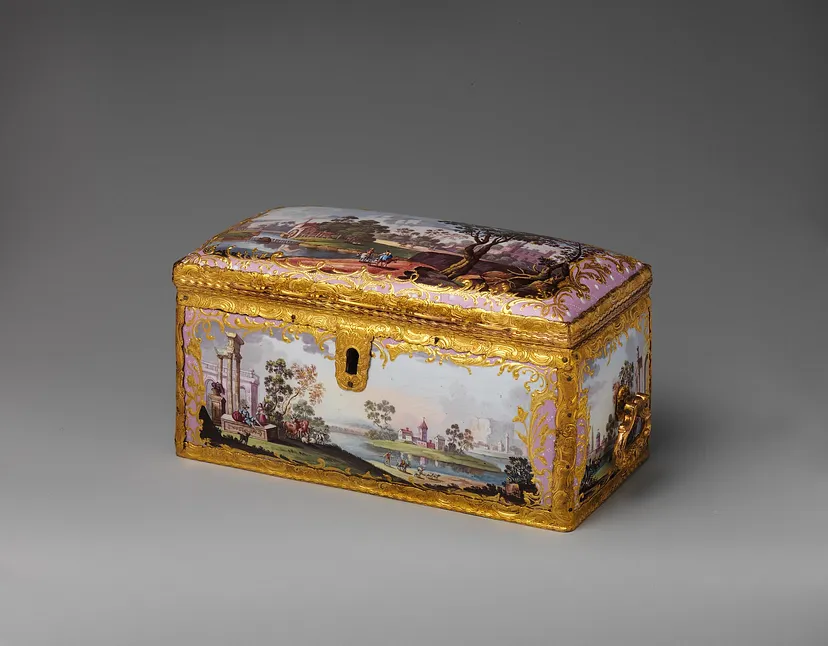
1770 Tea Casket, British, Staffordshire. White enamel on copper painted in polychrome enamels. metmuseum
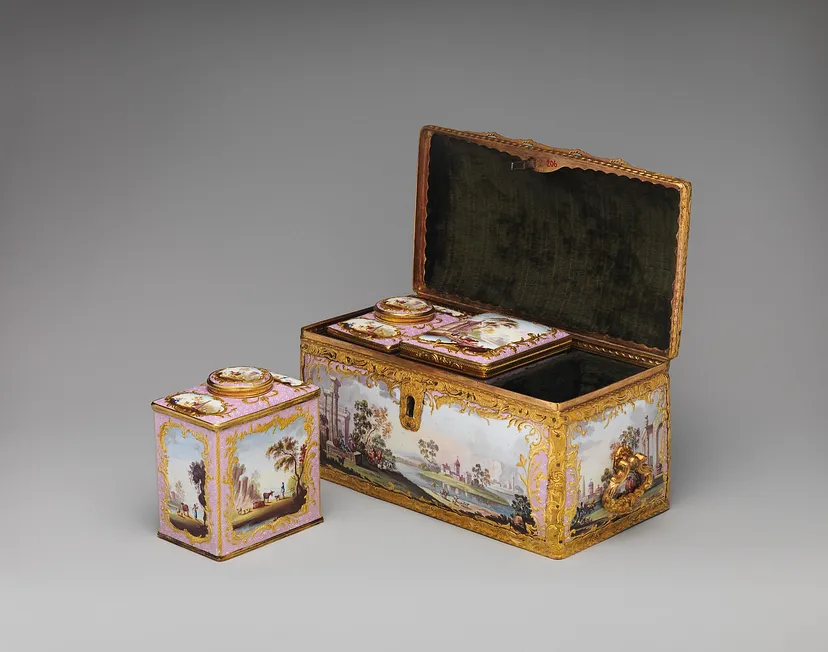
1770 Tea Casket, British, Staffordshire. White enamel on copper painted in polychrome enamels. metmuseum
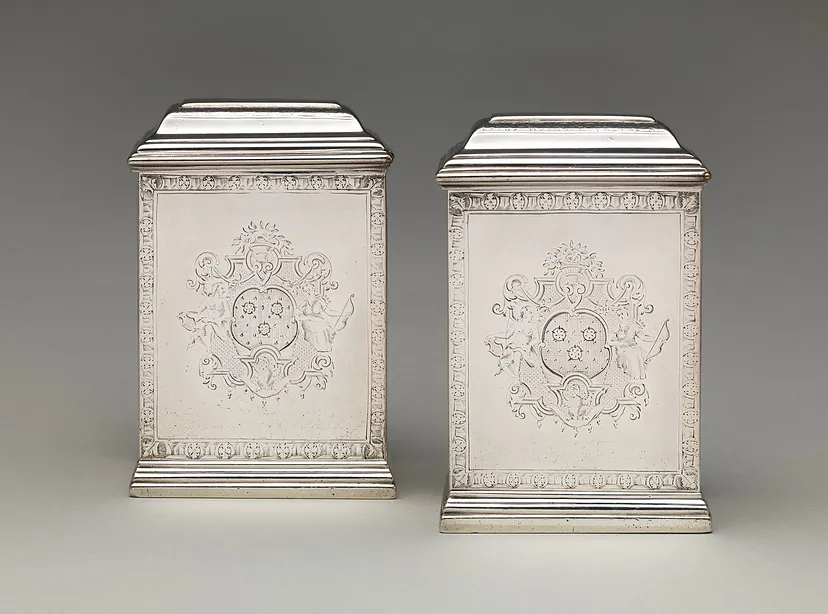
1726 Pair of Tea Caddies. British. Silver. metmuseum
Chinoiserie was often used in conjunction with the Baroque and Rococo decorative styles that reigned during the mid-18th century. It’s characterized by asymmetrical forms, blue-and-white motifs commonly found on Chinese porcelain, extensive gilding, Chinese patterns and figures, and extravagant scenery. By the 18th century, European commerce with China blossomed, and one of the chief exports to European markets was that of stunning blue-and-white Chinese porcelain.
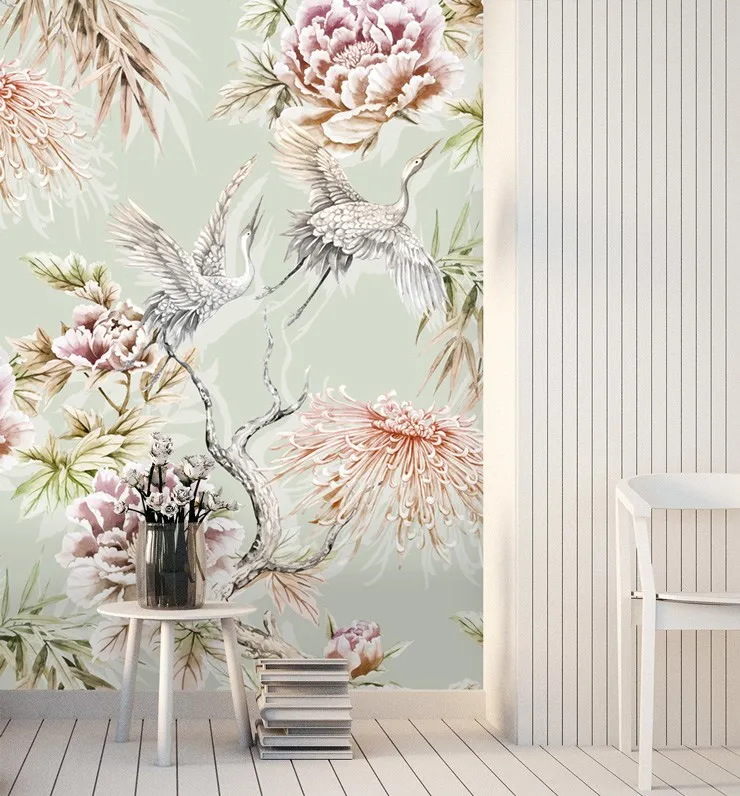
Europeans sought to recreate the Eastern aesthetic in their own porcelain, and a new style emerged that rejected the stiff opulence of the Baroque period which preceded it. This new style, which we know today as Chinoiserie, was light and airy, featured illustrations of dragons and phoenixes, and began to influence design trends in architecture and furniture.
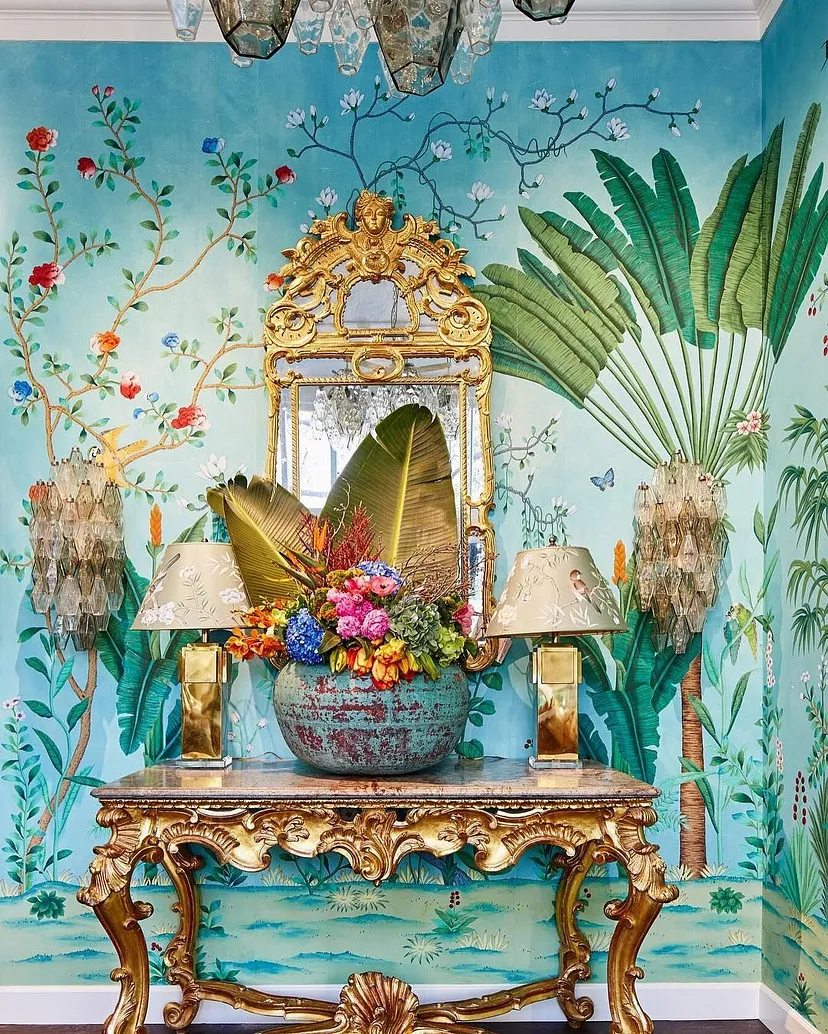
The earliest appearance of a Chinoiserie interior scheme was in The Grand Trianon’s Trianon de porcelaine, built for Louis XIV at Versailles in 1670. The vast porcelain pavilion was designed by architect Louis Le Vau. The style became highly popular among the nobility and aristocracy, and it was rare to find a house without Chinese-influenced, exuberantly-styled rooms. They were often combined with French toile, surface decorations repeated on cloth fabrics.
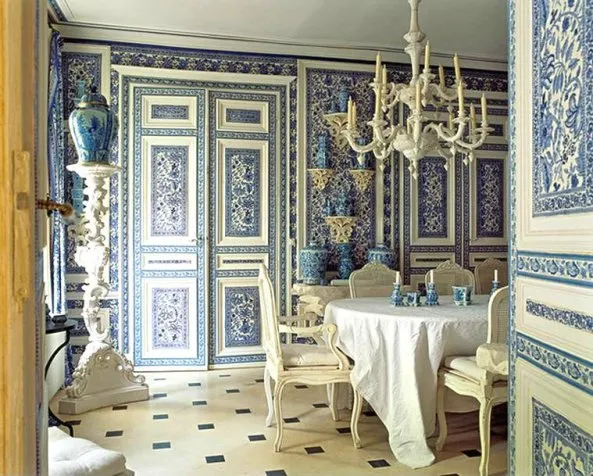
Chinoiserie continued to appear in decorations throughout Europe and America. Even to this day, many consumers believe they are purchasing authentic, Chinese export porcelain and other collectibles without understanding the history of Chinoiserie style.
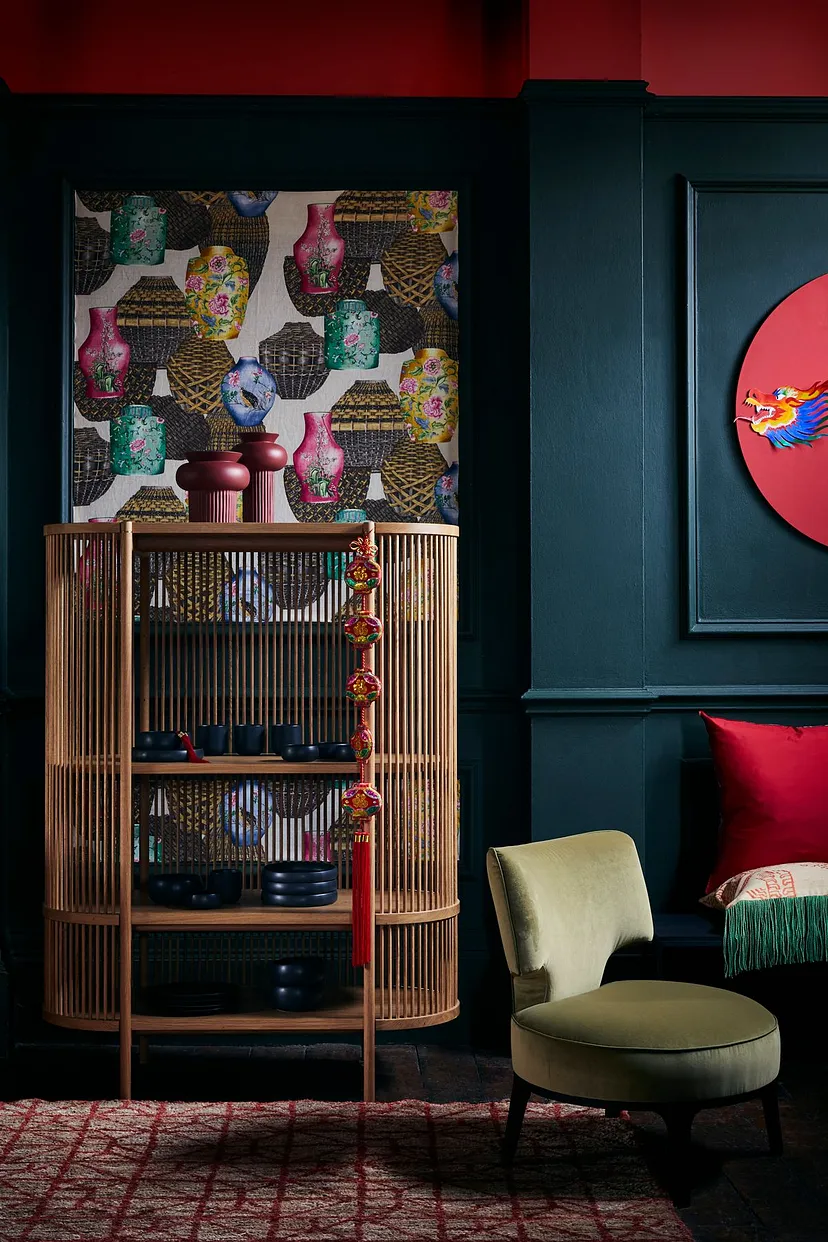
Because it became so popular in Europe, Chinese manufacturers capitalized on the trend, making it even harder to distinguish the origin of many items today.